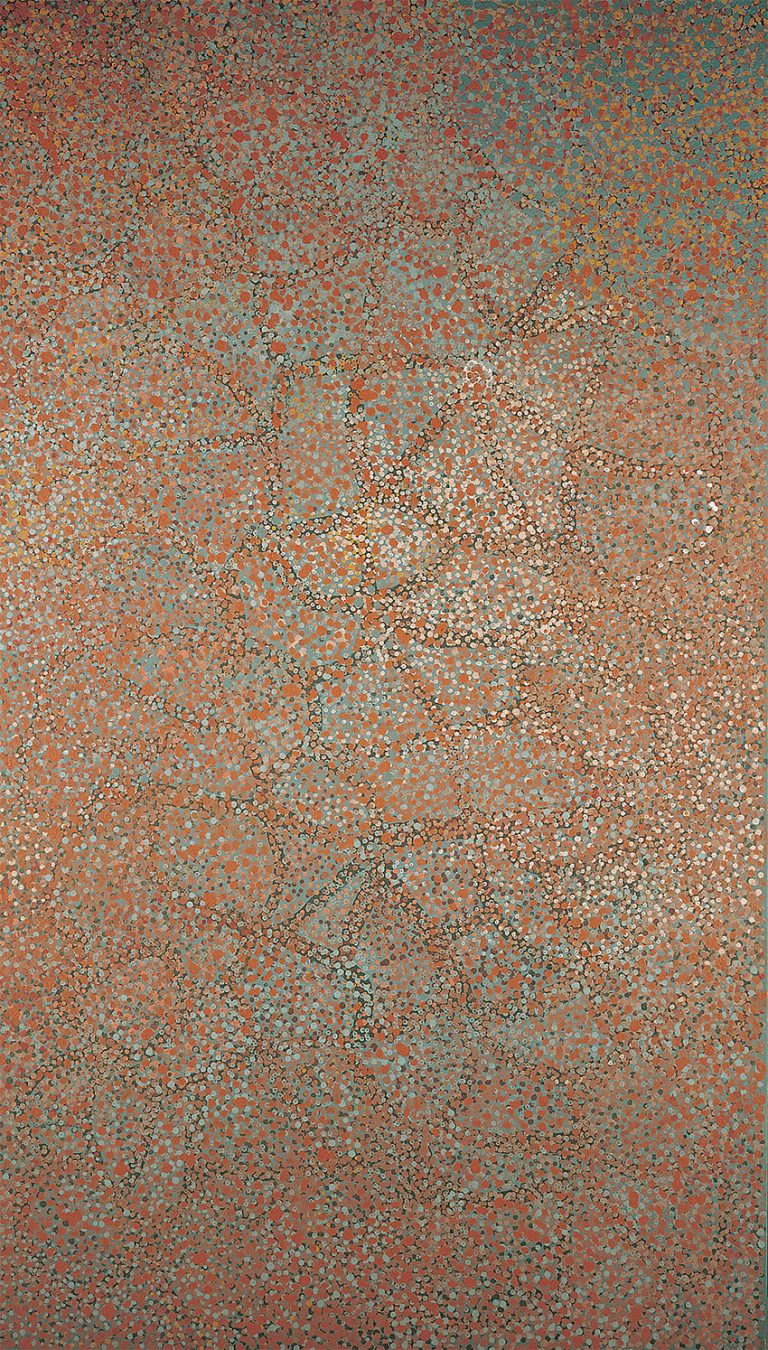We acknowledge the Traditional Owners of the land on which the Queensland Art Gallery | Gallery of Modern Art stands and recognise the creative contribution First Australians make to the art and culture of this country.

Emily Kame Kngwarreye / Anmatyerre people / Australia c.1910–96 / Wild Potato Dreaming 1990 / Synthetic polymer paint on canvas / 213.3 x 121.7cm / Purchased 1990 through the Queensland Art Gallery Foundation / Collection: Queensland Art Gallery | Gallery of Modern Art / © Emily Kame Kngwarreye/Licensed by Viscopy, 2013
Emily Kame KngwarreyeWild Potato Dreaming 1990
Not Currently on Display
Wild Potato Dreaming 1990 refers to the plants and seeds of Emily Kame Kngwarreye’s dreaming. The artist’s middle name, Kame means seed of the atnulare (yam or wild potato) and is an ancestral name which identifies the artist with her country.
The yam plant is an important food source and many of Kngwarreye’s works reflect its significance in desert life. Wild Potato Dreaming is a visual account of the journey of the growing yam.
The maze of lines can be read as both its subterranean movement and the story of its travel through country. Kngwarreye has covered its tracks with a dense veil of dots representing the flowers and vegetation growing above-ground in her Anmatyerre country.
Emily Kame Kngwarreye was an eastern Anmatyerre speaker and leader of the women’s ceremony of the Utopia region, which is located on the north-west edge of the Simpson Desert in the Northern Territory. She lived off the land, according to the cultural and religious practices of her people, and did seasonal work on cattle stations in the area.
Her art gained recognition after a Sydney exhibition in 1988, and in 1989 she was awarded the Robert Holmes à Court Foundation scholarship. Following her first solo exhibition, the Australia Council awarded her the Australian Artists Creative Fellowship Award. Kngwarreye’s paintings have been exhibited in almost every major Aboriginal art exhibition since the late 1980s and are held in all major state collections.
Kngwarreye died in September 1996. In a painting career spanning less than a decade, she has become known nationally and internationally as one of the most important and influential painters in Australia.
Discussion Questions
1. What does Wild Potato Dreaming tell us about the Kngwarreye’s country? Why would she want to share this information?
2. Compare the way the artist creates a visual account of a journey with the design of Western maps. How and why do they differ?
Classroom Activities
1. Think of the journey you make to and from school. Using an aerial perspective, draw a map that includes the landmarks, bus/train stops and meeting places along the way. Think of the different ways you could represent these landmarks in your map.
2. Collect some images — these could be digital photographs or images from magazines or brochures — which relate to you, your experiences and the journeys you regularly make. Transfer some of the images to transparent materials (such as tracing paper, plastic, cellophane, etc.) and make a collage that layers these images.
3. Integrate the map drawing you developed in Activity 1 with the collage from Activity 2 and explore how the layers and patterns can be integrated to tell one story.